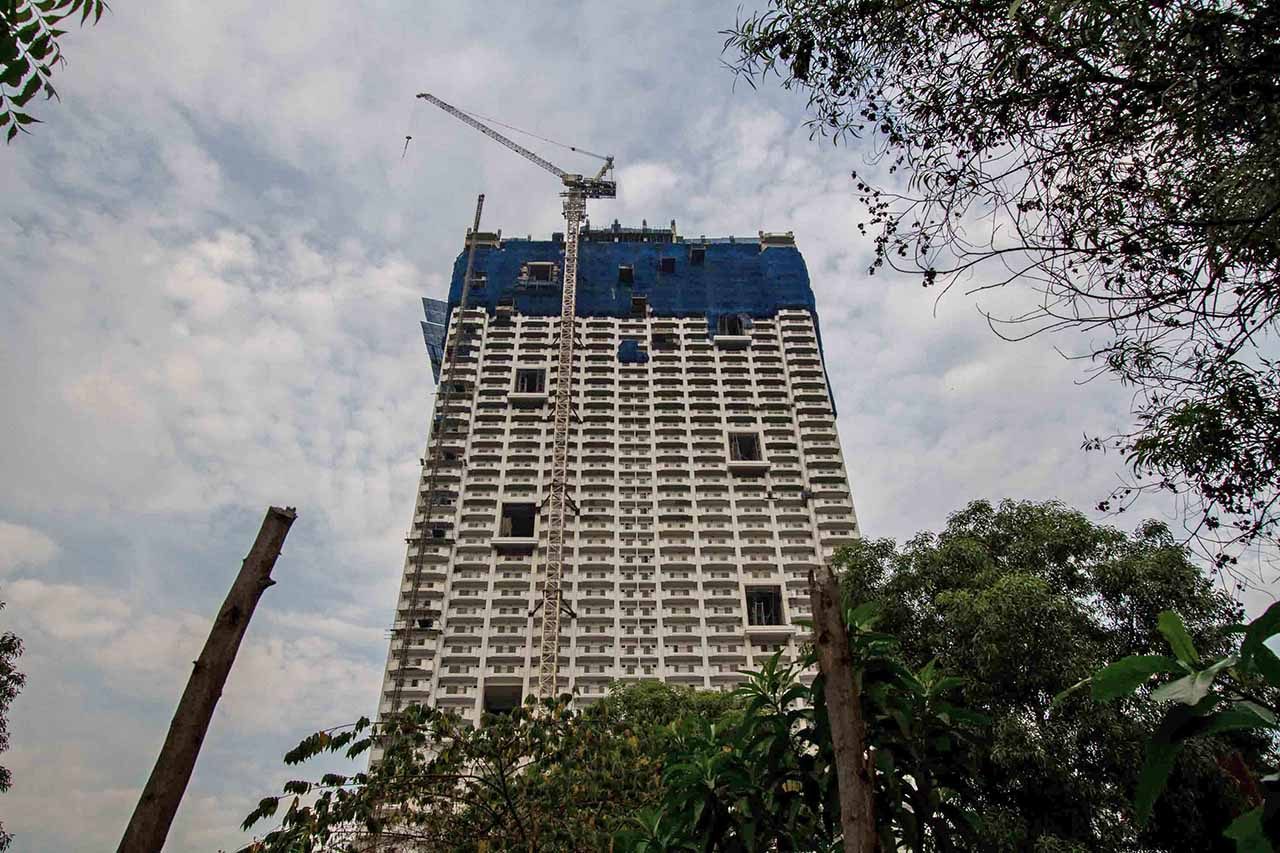SUMMARY
This is AI generated summarization, which may have errors. For context, always refer to the full article.

MANILA, Philippines – Local zoning laws that limit the height of buildings in the city of Manila are more of the exception rather than the rule, a Supreme Court (SC) justice said on Tuesday, August 25, during the 5th round of oral arguments on the controversial Torre de Manila condominium project.
In his interpellation of Manila city legal officer Jose Alberto Flaminiano, SC justice Antonio Carpio said that most commercial residential buildings in the city have applied for a variance or exemption from Manila’s zoning laws, and did not comply with the prescribed maximum floor-area ratio (FAR) of 4.
“If you look at the commercial residential buildings in Manila in the last 10 years, they are all variances. They did not follow the original FAR 4,” Carpio said.
“So the rule really is variance, and the exemption which is never followed is FAR 4,” he added, to which Flaminiano responded: “It appears that way.”
The High Court is hearing a petition filed against the 49-story Torre de Manila, which heritage advocates have slammed for ruining the sightline of the historic Rizal Monument as it can be clearly seen rising behind the statue of the national hero.
The petitioner, Knights of Rizal, also said the Torre de Manila violated local zoning laws. In the university cluster where the condominium stands, Ordinance No. 8119 prescribes a maximum FAR of 4. Torre de Manila’s building plans show that it will have a floor-area ratio of 7.79. (READ: SC justice questions Torre de Manila zoning permit)
Executive function
To get around this limit, a real estate developer must apply for a variance which has to be approved by the city council upon the recommendation of the Manila Zoning Board of Adjustments and Appeals.
But the SC justice questioned the power of the city council to perform an executive function.
“What’s happening now is that the executive function is exercised by the city council. Why does the city council exercise this function? What’s in it for them?” Carpio asked.
“Is the ordinance invalid because the executive function is exercised by the legislative body? What is the role of the city mayor now? There is something terribly wrong,” he added.
Carpio also noted that it seemed to be the “business model” in Manila to compel real estate developers to apply for a variance because it would not make good business sense to comply with the zoning limits and risk losing money.
“Isn’t that sad? Every businessman has to go to the city council and practically ask for a zoning ordinance for this particular lot… Why does the city council want every developer to ask for a variance?” Carpio asked.
Flaminiano did not categorically answer Carpio’s questions, but agreed with the points raised by the magistrate.
In last week’s oral arguments, Flaminiano said that the city officials who issued the permits for Torre de Manila “acted beyond the scope of their authority.” The permits were issued under the term of former Manila mayor Alfredo Lim. – Rappler.com
Add a comment
How does this make you feel?
There are no comments yet. Add your comment to start the conversation.